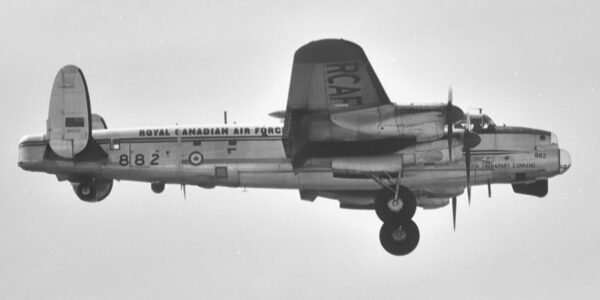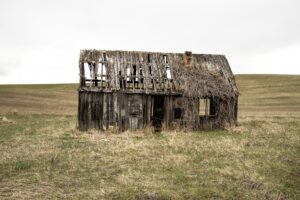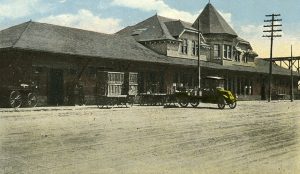By Patty Haun Roos – Victoria, B.C.
My grandma always talked about her younger brother Rudy and how his plane was shot down by the Germans in WWII. She said that was the day her whole world came to a screaming halt.
The family lived in Moose Jaw, Sask. Their original family name was Romankeiwicz, but it was shortened to Roman. Grandma was the oldest of six children, four girls and two boys.
When my great-grandmother passed on Christmas Eve 1936, grandma was 24 years old and her youngest sibling was 10. She was left to bring up her younger siblings. Rudy was just a teenager.
Rudy enlisted in the Air Force in 1944 and became a flight officer for No. 408 squadron nicknamed “The Goose Squadron.” In June/July 1944, Rudy and his team had their introduction to operational flight training close to the fighting lines.
Special raid called
By the end of September, the crew had completed 10 of their 30 engagements. The flight crew earned a welcomed 10-day leave. When they returned, one of the flight officers was ill and had to be hospitalized.
On Oct. 14, a special raid was called with every available plane and crew on call, ready for action. The target that night was Wilhelmshaven, Germany.

The flight crew had a heavy air fight and their plane was hit. As it began to spiral, everyone evacuated via parachute except the borrowed pilot who lost his life, first lieutenant John Wolfe.
Rudy landed hard on the salt flats then made his way to a lighthouse and was taken in by the lighthouse keeper. The next morning the lighthouse keeper reported him to the Germans and he was taken prisoner.
What the German soldier didn’t know was Rudy could speak German fluently and understand. When Cpl. Johann Neitz muttered in German what he was going to do to Rudy, he didn’t realize Rudy understood everything.
Once out in the salt flats, he intended to shoot and kill Rudy. When Rudy hit the ground the night before, he injured his hip, so he couldn’t move as quickly as the soldier wanted him to. This resulted in Rudy being shot twice. Luckily the bullets went right through each side of his torso, missing vital organs.
Reunited with surviving crew
Rudy was later brought to the hospital. They bandaged him up and sent him to a POW camp, where he was reunited with the rest of the surviving flight crew. It was a cold, wet October night where the men all had to wait on the train platform for hours. Nobody knows how Rudy survived the night as he had lost a lot of blood.
Cpl. Neitz was charged with war crimes for shooting Flying Officer Rudy Roman. He was one of only two enemy servicemen convicted by Canada of war crimes following WWII.
Grandma said they were told he was killed in action at first because his plane was found but not Rudy. It was weeks of sadness thinking her little brother had died – then the family got word he survived and was in a POW camp.
Before my great-uncle Rudy passed away in November 1998, he was invited to the opening of the Bomber Command Museum in southern Alberta where his complete war story is on display.
— Editor’s note: As part of our editorial guidelines, we do not typically accept stories stories from third parties or stories written in third-person, however, we do make case-by-case exceptions for veterans and war-service stories, as not all who served our country made it back home to tell their stories in their own words, or they have passed away before they could share their story with us.



